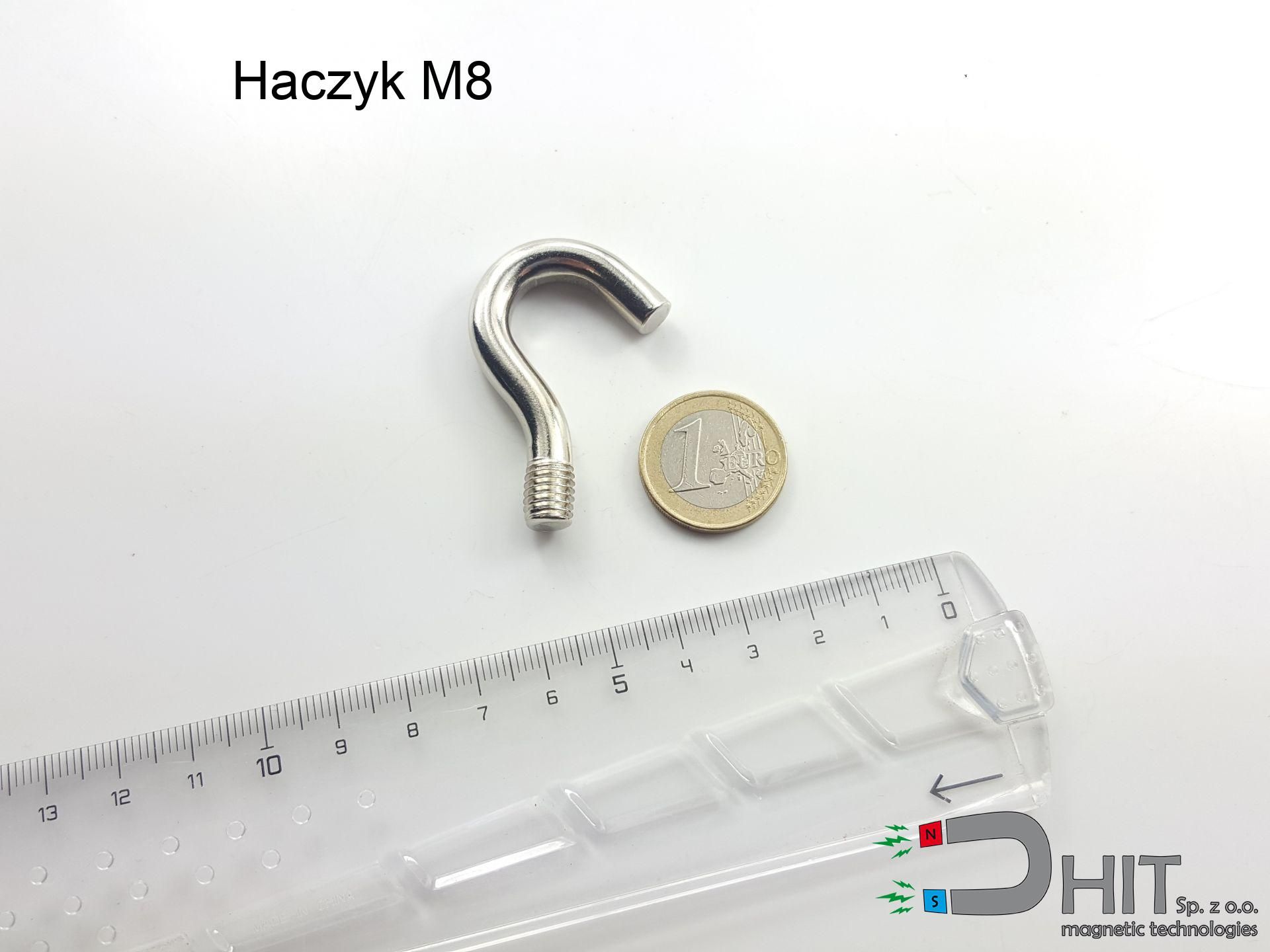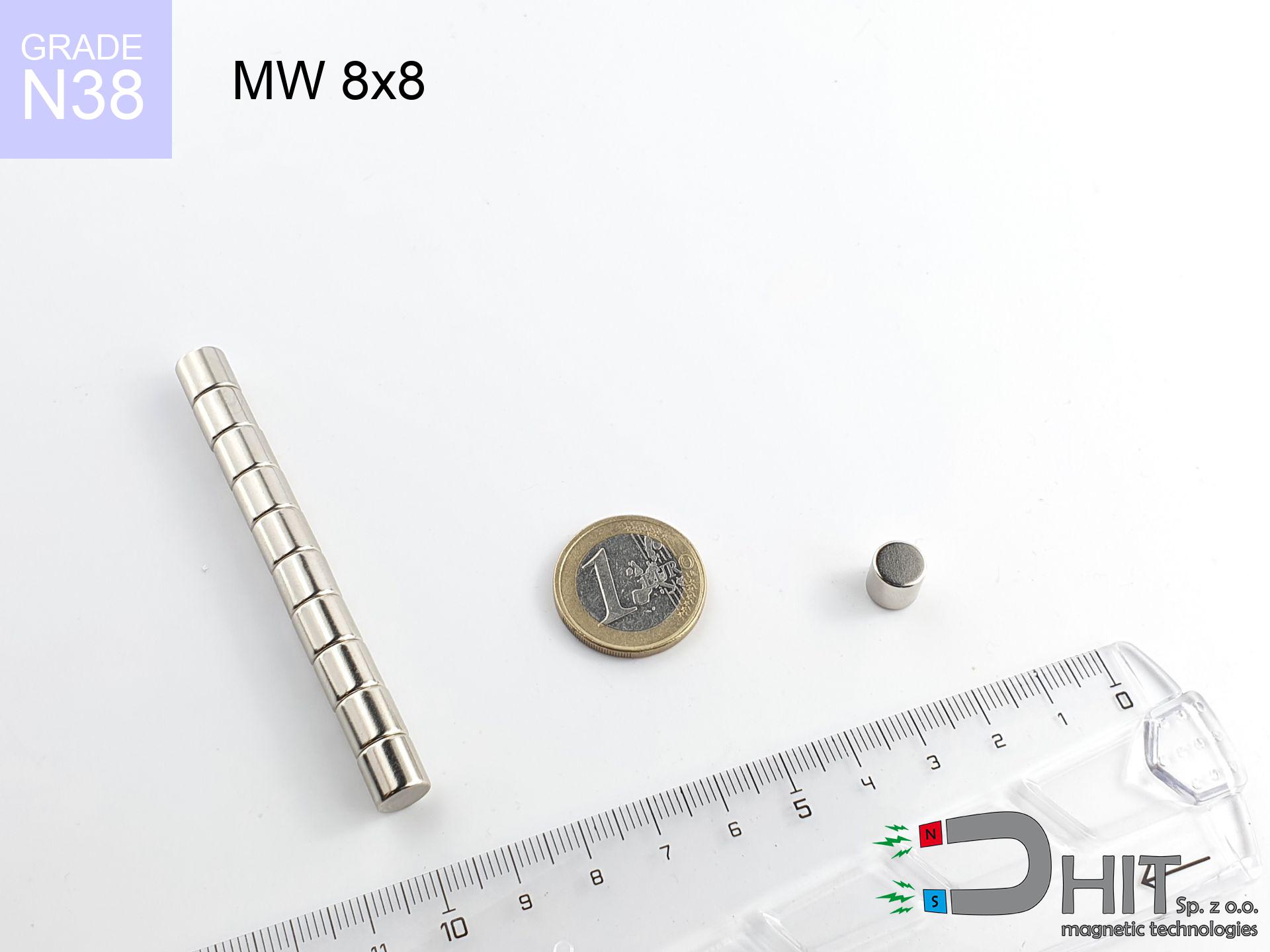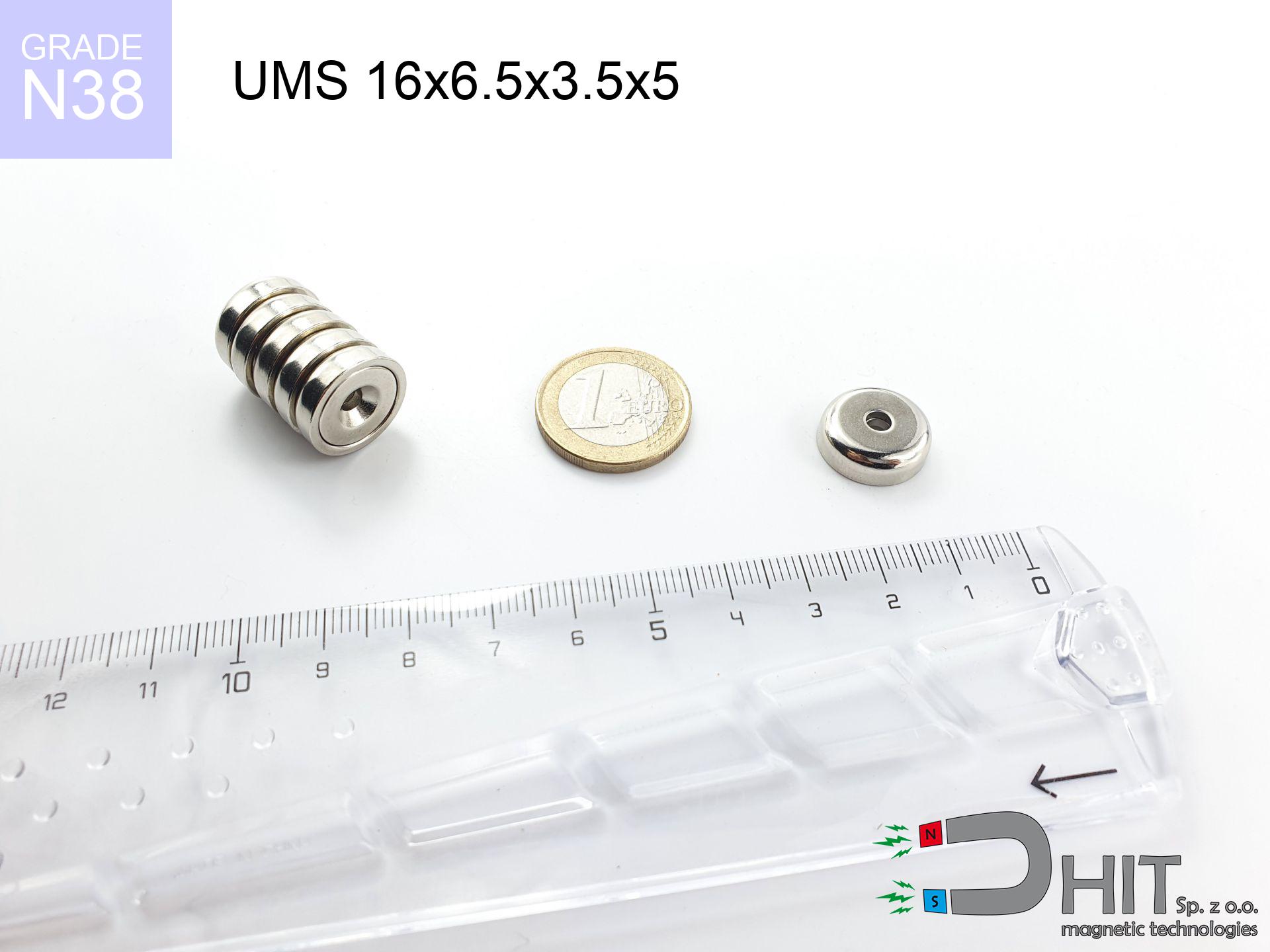AM Haczyk M8 - magnetic accessories
magnetic accessories
Catalog no 080508
Coating
[NiCuNi] Nickel
1.230 ZŁ with VAT / pcs + price for transport
1.000 ZŁ net + 23% VAT / pcs
bulk discounts:
Need more?
Contact us by phone
+48 22 499 98 98
if you prefer send us a note through
contact form
our website.
Parameters as well as appearance of a neodymium magnet can be verified using our
our magnetic calculator.
Same-day processing for orders placed before 14:00.
Technical details - AM Haczyk M8 - magnetic accessories
Specification / characteristics - AM Haczyk M8 - magnetic accessories
| properties | values |
|---|---|
| Cat. no. | 080508 |
| Production/Distribution | Dhit sp. z o.o. |
| Country of origin | Poland / China / Germany |
| Customs code | 85059029 |
| Coating | [NiCuNi] Nickel |
| Manufacturing Tolerance | ±1 mm |
Physical properties of sintered neodymium magnets Nd2Fe14B at 20°C
| properties | values | units |
|---|---|---|
| Vickers hardness | ≥550 | Hv |
| Density | ≥7.4 | g/cm3 |
| Curie Temperature TC | 312 - 380 | °C |
| Curie Temperature TF | 593 - 716 | °F |
| Specific resistance | 150 | μΩ⋅cm |
| Bending strength | 250 | MPa |
| Compressive strength | 1000~1100 | MPa |
| Thermal expansion parallel (∥) to orientation (M) | (3-4) x 10-6 | °C-1 |
| Thermal expansion perpendicular (⊥) to orientation (M) | -(1-3) x 10-6 | °C-1 |
| Young's modulus | 1.7 x 104 | kg/mm² |
Elemental analysis
| iron (Fe) | 64% – 68% |
| neodymium (Nd) | 29% – 32% |
| boron (B) | 1.1% – 1.2% |
| dysprosium (Dy) | 0.5% – 2.0% |
| coating (Ni-Cu-Ni) | < 0.05% |
Sustainability
| recyclability (EoL) | 100% |
| recycled raw materials | ~10% (pre-cons) |
| carbon footprint | low / zredukowany |
| waste code (EWC) | 16 02 16 |
See more offers
Advantages and disadvantages of neodymium magnets.
Pros
- They have stable power, and over around 10 years their attraction force decreases symbolically – ~1% (according to theory),
- They feature excellent resistance to magnetic field loss when exposed to opposing magnetic fields,
- A magnet with a metallic gold surface looks better,
- The surface of neodymium magnets generates a powerful magnetic field – this is a distinguishing feature,
- Made from properly selected components, these magnets show impressive resistance to high heat, enabling them to function (depending on their form) at temperatures up to 230°C and above...
- Thanks to modularity in shaping and the ability to modify to client solutions,
- Key role in advanced technology sectors – they serve a role in HDD drives, motor assemblies, medical devices, as well as technologically advanced constructions.
- Compactness – despite small sizes they provide effective action, making them ideal for precision applications
Disadvantages
- At strong impacts they can crack, therefore we advise placing them in special holders. A metal housing provides additional protection against damage, as well as increases the magnet's durability.
- When exposed to high temperature, neodymium magnets suffer a drop in force. Often, when the temperature exceeds 80°C, their strength decreases (depending on the size, as well as shape of the magnet). For those who need magnets for extreme conditions, we offer [AH] versions withstanding up to 230°C
- They oxidize in a humid environment - during use outdoors we suggest using waterproof magnets e.g. in rubber, plastic
- Limited possibility of creating nuts in the magnet and complex forms - preferred is casing - magnetic holder.
- Possible danger related to microscopic parts of magnets pose a threat, in case of ingestion, which is particularly important in the context of child safety. Additionally, small components of these magnets are able to be problematic in diagnostics medical when they are in the body.
- High unit price – neodymium magnets cost more than other types of magnets (e.g. ferrite), which hinders application in large quantities
Holding force characteristics
Maximum lifting force for a neodymium magnet – what contributes to it?
- on a block made of structural steel, effectively closing the magnetic field
- whose thickness is min. 10 mm
- characterized by even structure
- with zero gap (no paint)
- under vertical application of breakaway force (90-degree angle)
- at temperature approx. 20 degrees Celsius
Determinants of lifting force in real conditions
- Gap (between the magnet and the plate), as even a very small distance (e.g. 0.5 mm) results in a decrease in force by up to 50% (this also applies to varnish, corrosion or dirt).
- Force direction – catalog parameter refers to detachment vertically. When slipping, the magnet exhibits much less (often approx. 20-30% of nominal force).
- Substrate thickness – for full efficiency, the steel must be adequately massive. Paper-thin metal limits the attraction force (the magnet "punches through" it).
- Chemical composition of the base – low-carbon steel gives the best results. Alloy admixtures lower magnetic properties and holding force.
- Plate texture – ground elements guarantee perfect abutment, which increases field saturation. Uneven metal weaken the grip.
- Temperature influence – high temperature weakens magnetic field. Exceeding the limit temperature can permanently damage the magnet.
Holding force was tested on the plate surface of 20 mm thickness, when a perpendicular force was applied, in contrast under attempts to slide the magnet the load capacity is reduced by as much as 75%. Additionally, even a small distance between the magnet’s surface and the plate lowers the load capacity.
H&S for magnets
Allergy Warning
Warning for allergy sufferers: The nickel-copper-nickel coating consists of nickel. If redness appears, immediately stop working with magnets and wear gloves.
Do not drill into magnets
Machining of neodymium magnets carries a risk of fire hazard. Neodymium dust oxidizes rapidly with oxygen and is hard to extinguish.
Protective goggles
Protect your eyes. Magnets can fracture upon uncontrolled impact, launching shards into the air. We recommend safety glasses.
Swallowing risk
Absolutely keep magnets away from children. Risk of swallowing is significant, and the consequences of magnets connecting inside the body are very dangerous.
Precision electronics
Navigation devices and mobile phones are highly sensitive to magnetic fields. Direct contact with a powerful NdFeB magnet can decalibrate the internal compass in your phone.
Electronic hazard
Avoid bringing magnets near a purse, computer, or TV. The magnetic field can irreversibly ruin these devices and wipe information from cards.
Physical harm
Protect your hands. Two powerful magnets will snap together instantly with a force of massive weight, crushing everything in their path. Be careful!
Handling guide
Handle magnets consciously. Their powerful strength can surprise even professionals. Plan your moves and do not underestimate their force.
Permanent damage
Keep cool. NdFeB magnets are susceptible to heat. If you require resistance above 80°C, ask us about HT versions (H, SH, UH).
ICD Warning
For implant holders: Strong magnetic fields affect electronics. Keep minimum 30 cm distance or request help to handle the magnets.








